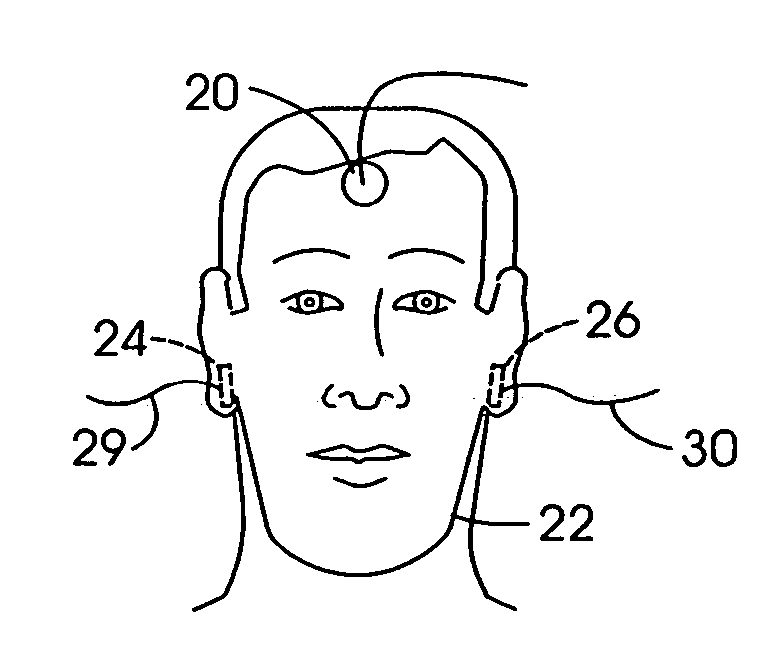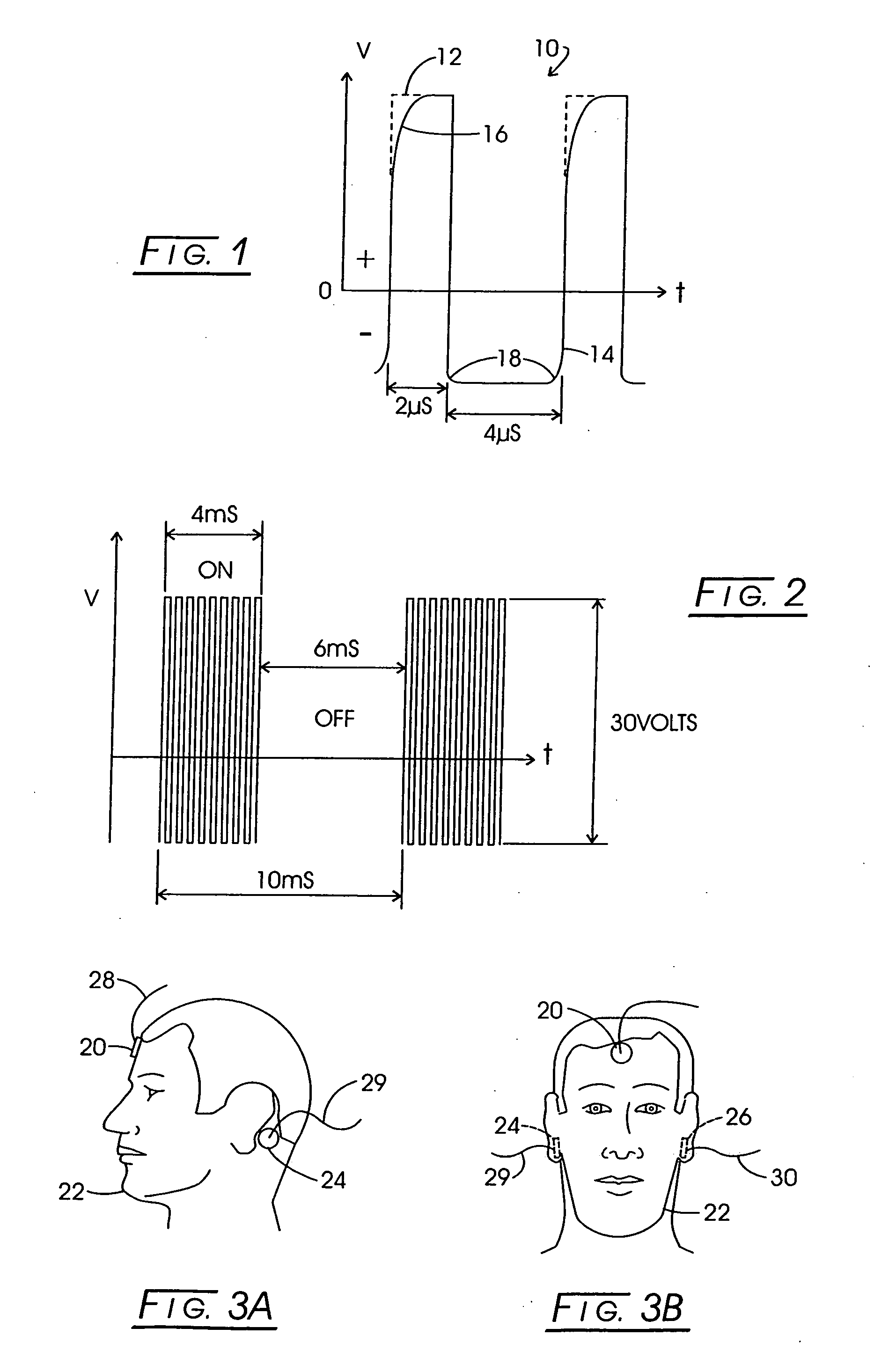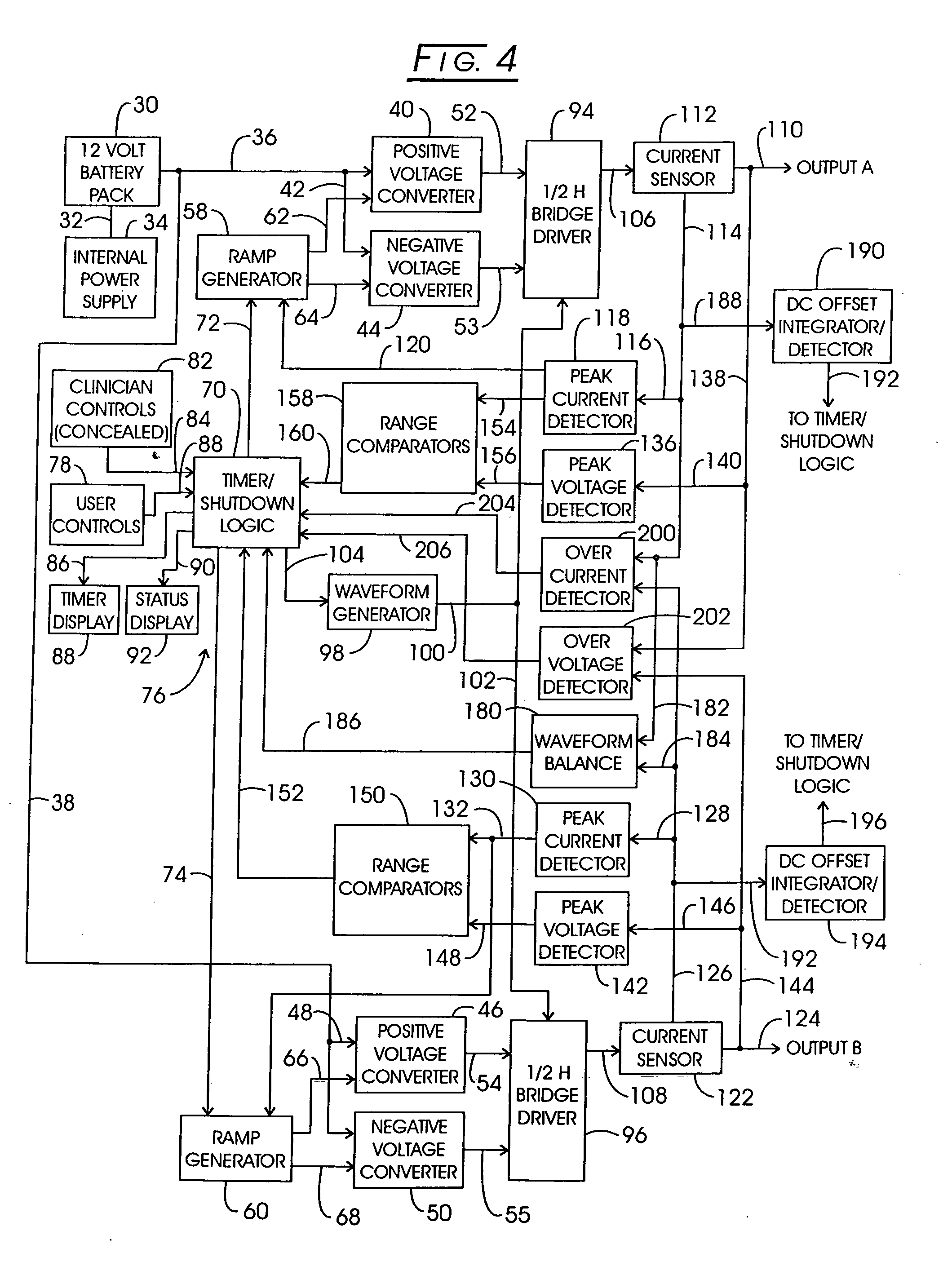Electrical stimulation of tissue for therapeutic and diagnostic purposes
a tissue and electric stimulation technology, applied in electrotherapy, therapy, etc., can solve the problems of unpleasant experience, low frequency of square wave signal, and low frequency of square wave current application at the skin
- Summary
- Abstract
- Description
- Claims
- Application Information
AI Technical Summary
Benefits of technology
Problems solved by technology
Method used
Image
Examples
Embodiment Construction
[0048] In the discourse to follow, an initial apparatus is described which functions to generate a Limoge signal in terms of a high frequency (167 kHz) where a positive-going waveshape is produced for an interval of two microseconds, followed by a negative-going continuum of one half the absolute value of the positive-going amplitude but for an interval of four microseconds. This high frequency signal thus carries no d.c. term. A zero d.c. term characteristic avoids iontophoresis or damaging salt buildup in the tissue of the patient. This high frequency waveform is produced for a burst interval of four ms ON followed by an OFF interval of 6 ms. Such sequence is repeated at each ten ms interval. In the Limoge constructed devices heretofore in use, the operator of the generator system observes current values at an ammeter and gradually elevates voltage by turning a dial to, in turn, evolve a current value which increases until it reaches a desired current peak-to-peak amplitude which ...
PUM
 Login to View More
Login to View More Abstract
Description
Claims
Application Information
 Login to View More
Login to View More - R&D
- Intellectual Property
- Life Sciences
- Materials
- Tech Scout
- Unparalleled Data Quality
- Higher Quality Content
- 60% Fewer Hallucinations
Browse by: Latest US Patents, China's latest patents, Technical Efficacy Thesaurus, Application Domain, Technology Topic, Popular Technical Reports.
© 2025 PatSnap. All rights reserved.Legal|Privacy policy|Modern Slavery Act Transparency Statement|Sitemap|About US| Contact US: help@patsnap.com



